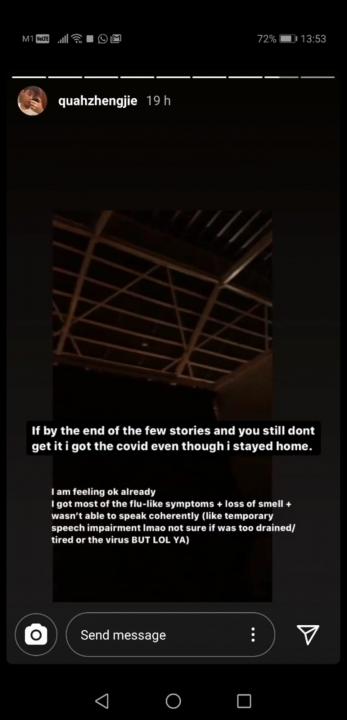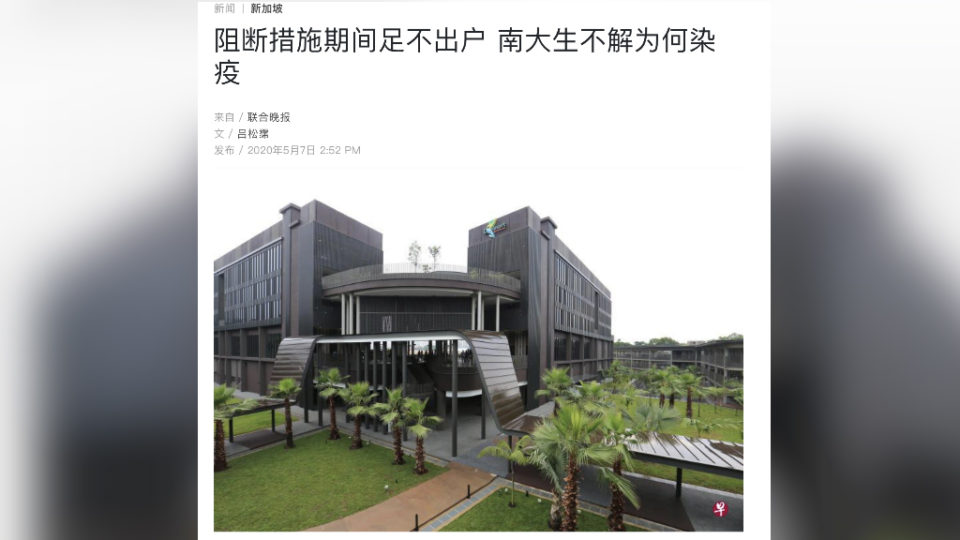The editor of a local Chinese-language newspaper apologized today to a COVID-19 patient after running an article falsely claiming the latter had agreed to be interviewed about his experience.
The editor of the Lianhe Wanbao newspaper issued an online mea culpa after Quah Zheng Jie publicly accused one of its reporters of ignoring his refusal to participate and going ahead with a story based on social media posts rather than an “interview” that never happened.
“We sincerely apologise to Mr Quah, as we should not have attributed the story we ran to an interview with him when he expressly declined the interview request,” Han Yong May wrote.
Han, in an open letter published today, added that a disciplinary committee would consider disciplining the noob journalist responsible for the May 7 article.
“This incident serves as a timely reminder to us, that we should constantly review our working procedures and reiterate to our colleagues the importance of adhering to journalistic principles and processes,” she wrote.
The Chinese-language article, headlined “NTU Student perplexed at how he contracted COVID virus” was published in the newspaper and online at Zaobao.com.sg under the byline of reporter Lee Song Pei. The online version has been taken down.
The response came after Quah published a statement on Sunday accusing the outlet of publishing a “fabricated” article.
The article included descriptions of his family and daily activities prior to the “circuit-breaker” measures likely gleaned from Quah’s social media rather than a direct interview. According to Han, those parts were later removed to “obscure” Quah’s identity.
Quah also shared screenshots of their chat exchange in which he declined several requests to be interviewed.
Other parts of the story described what Quah had posted on social media from inside the Singapore Expo isolation facility, where he had been treated for COVID-19.
Story not ‘fabricated’
Had the story simply been based on what Quah had posted to social media, the story likely would have ended there.
In fact, that led Han to reject Quah’s assertion the article was “fabricated,” as it was based on “extracts from Mr Quah’s social media posts.”
For example, Quah had posted an IG story about contracting COVID-19 despite not visiting other places.
“If by the end of the few stories and you still dont get it i got the covid even though i stayed home,” it read.
Quah did not immediately respond to Coconuts Singapore’s request for comment.

Journalist was new
Quah had demanded the editors fire Lee. But Han defended the journalist, saying he was new on the job.
“Although the reporter has indeed made a mistake, the reporter has been truthful in admitting his mistake and expressing his remorse for misleading readers and impacting the newspaper’s reputation. We need to carefully consider if there are mitigating factors for someone who is just starting off his career,” Han said.
“We have set up an independent disciplinary committee to review the case, and will decide on the penalties to be imposed. SPH, as the employer of the reporter, will take responsibility by addressing the mistake, and take measures to avoid further recurrences,” she added.
While newsroom policies vary, plagiarism and knowingly making false assertions are considered the cardinal sins of journalism and routinely met with termination in many newsrooms.
Other stories you should see:
Gang rivals fighting over girl likely sparked Chinatown brawl: police
Singaporeans flock to get hair cut as barbers, hair salons reopen
20,000 workers may be discharged by June as dorm outbreaks continue




